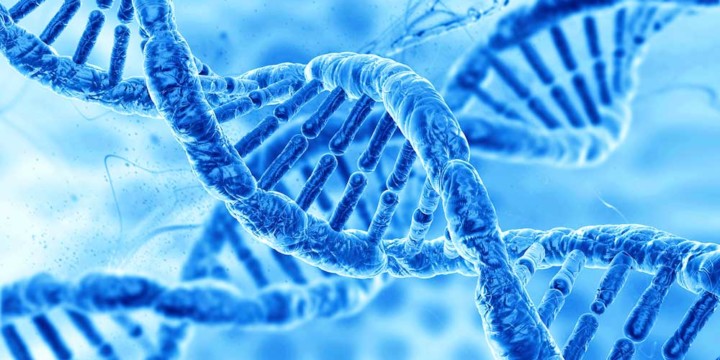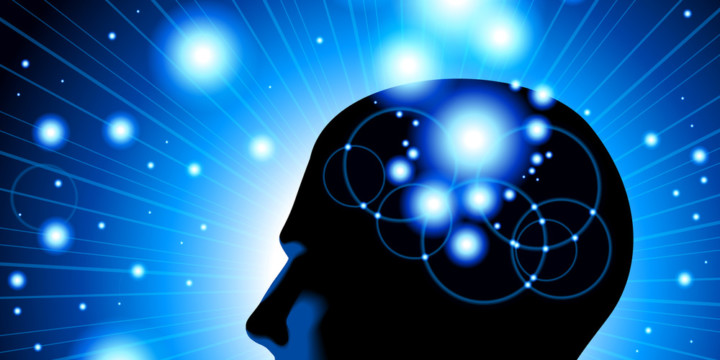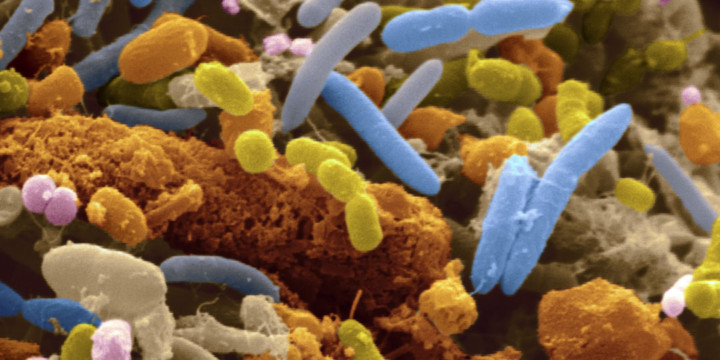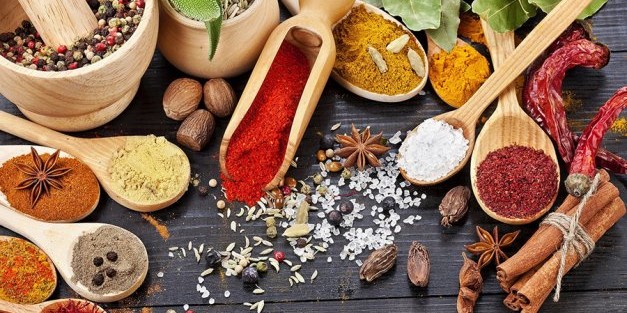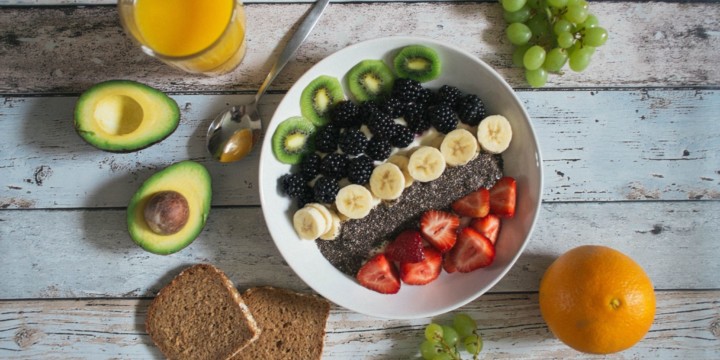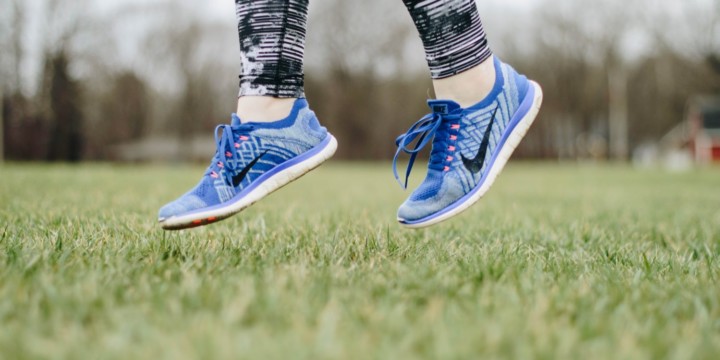Physiology of AMD
Macular degeneration is one of the leading causes of blindness with cataract and glaucoma being second and third respectively. Macular degeneration is a slowly progressive, non-curable disease. The Macula is the most sensitive, pigmented central portion of the retina which has, responsible for high resolution and colored vision. Damage to this area can lead to the blurring of vision to blindness; even if the rest of the retina is intact only peripheral vision will be retained.
Types of AMD
Dry type (atrophic type): most of the cases of macular degeneration are this variety, approximate 85 percent. Dry AMD results from thinning of macular tissue. Dry type is diagnosed when yellow color deposits are seen beneath the retina in ophthalmoscope (an instrument used to visualize the interior of the eye), these deposits are known as drusen.
Wet type (exudative type): This is a rare type of AMD occurring in only 15 percent of cases. The growth of abnormal blood vessels in the macular region which is naturally devoid of blood vessels and the leaks from these blood vessels causes permanent damage to the cells in the macular region leading to loss of vision.
Stages of AMD
There are three stages of Macular Degeneration (AMD)
Early Stage AMD: In this stage, there is no vision loss. Generally, it gets diagnosed incidentally during routine eye check-up, medium sized yellow color deposits seen beneath the retina in ophthalmoscope ( an instrument used to visualize the interior of the eye)
Intermediate Stage AMD: There is vision loss that may not be noticeable but on ophthalmoscope large sized yellow pigmentation is clearly visible.
Late Stage AMD: There is a complete loss of central vision
Causes
- Most of the cases of macular degeneration are familial and are passes on to generation through the defective genes
- Caucasians are more likely to develop the disease than Latin Americans
- Smoking doubles the risk of suffering from macular degeneration
- Elderly aged individuals with high blood pressure are more likely to suffer from macular degeneration than young adults
- Stargardt disease caused due to a specific defective gene causes inherited juvenile macular degeneration.
Symptoms
- Distorted vision as in straight lines appear wavy
- Shadows or missing areas in vision (scotoma)
- Blurred vision
- Slow progressing, painless loss of vision
- Difficulty in discriminating colors
Treatment in Allopathy
There is no cure for macular degeneration but can reduce disability with the presently available treatments.
General measures
Protection of eyes from UV rays, avoid smoking, healthy eating and regular exercise are advised.
Medical management
Lutein and zeaxanthin supplements slow down the progression of the disease.
Surgical management
Laser coagulation of blood vessels can be done in the wet type of macular degeneration.
Adaptive devices
These devices can help people read. These include magnifying glasses, special eyeglass lenses, computer screen readers, and television systems that enlarge reading the material.
Ayurveda and AMD
According to Ayurveda macular degeneration is caused due to the accumulation of ama (metabolic toxins) and imbalance in doshas, especially vata and pitta. In most cases, Ayurvedic treatment can control the further degeneration of the vision. The wet type of AMD requires immediate treatment.
Treatment of AMD in Ayurveda
The Ayurvedic treatment of AMD focuses on diet modification, lifestyle changes, panchakarma chikitsa, administration of herbs and provision of nutrition to the eye.
Panchakarma and specialized treatments for AMD
Apart from a general detox consisting of Vamana (emesis), Virechana (purgation), and Basti ( enemas), specialized eye treatments and procedures are carried out. These are:
Netra dhara (eyewash): This involves pouring a thin stream of liquids over the closed eyes from a height of about 3cms to 4cms, Triphala decoction is commonly used for this purpose.
Bidalaka (application of herbal paste): This involves an application of herbal pasts over the eyelids but avoiding the eyelashes. Herbal paste commonly used is Lodhra (Symplocos racemosa), Nimba/neem (Azadirachta indica), Shigru (Moringa oleifera), Amalaki (Emblica Officinalis).
Netra tarpana (eye rejuvenation): Netra tarpana involves pouring and retaining of warm medicated ghee into the eyes by a herbal paste boundary.
Anjana (collyrium): Anjana involves the application of Vimala varti or Bhaskara churna in the inner aspect of the lower eyelid.
Taila Shirodhara: In this process, warm medicated oil is poured over the forehead in a rhythmic manner. Generally, oil mixed with herbs such as Brahmi, Shankhpushpi, Yashtimadhu is used.
Takradhara: In in this process, lukewarm buttermilk medicated with Amalaki is poured over the forehead in a rhythmic manner.
Shiro lepa (application of herbal paste on the vertex of the head): a herbal paste of Amalaki (Emblica officinalis), Arjuna (Terminalia arjuna) are used for this procedure.
Diet changes
Increase intake of vitamins, antioxidants, and omega 3 fatty acid. Consume varied colored vegetables and fruits. Green leafy vegetables such as spinach, kale, broccoli, and fruits such papaya, oranges, mango, jackfruit, carrots, beetroot, sweet potato, pumpkins. Berries and nuts provide antioxidants which are necessary for the repair of damaged cells in the body
Salty and preserved foods must be avoided as it increases ama in the body
Non-vegetarian food such as egg, liver, and fish are rich in omega 3 fatty acid are beneficial for healthy eyesight.
Avoid high glycemic index foods, junk foods, and refined carbohydrates and sugar.
Lifestyle modifications
- Avoid unnecessary strain to the eye such as watching television, computer, reading small letter books, knitting, and stitching
- Wash eyes with clean plain water every hour to keep it hydrated
- Increase water intake
- Avoid exposure to sunlight and pollution
- Adequate sleep can relax the tired eyes, practice sleeping early and waking up early followed by yoga and meditation
- Cool packs dipped in rose water, aloe vera or plain water can soothe the eye and is known to be beneficial in improving symptoms of macular degeneration
Ayurvedic herbs
- Amalaki (Emblica officinalis): rich in vitamin c and antioxidants, balances pitta dosha and cleanses the body.
- Triphala (combination of three herbs): strengthens the muscles of the eyes and improve the vision
- Yashtimadhu (Glycyrrhiza glabra): balances pitta dosha and promotes vision.
Bhringraj (Eclipta alba): Bhringraj strengthens the muscle of the eye and balances all the three doshas.
Yoga and pranayama for AMD
Trataka yoga (fixed gaze exercise): having a fixed gaze on a candle flame or black dot on the wall or a crystal ball sitting in meditation pose or in squatting pose with an erect spine. Trataka is recommended to stimulate the alochaka pitta, the energy center related to sight.
This yoga is known to strengthen the muscles around the eyeball thus improving vision, regularise blood flow in the body, improve concentration and treat insomnia
Sirsasana (head standing pose): It increases oxygen flow directly to the brain and eyes which helps in the prevention of macular degeneration.
Simhasana (lion pose): The widened eyes in this pose strengthen the muscles around the eyes and help them to function better
Shavasana (corpse pose): It helps to reduce the strain and stress on body, mind, and eyes as well
Blinking, palming, Eye rolling, focus shifting and distant gaze are all exercise which relaxes and soothes the eyes along with strengthening the muscles of the eyeball, improving circulation retarding the progression of the disease.
Pranayama
Bhramari pranayama (humming bee pranayama) and Udgeeth pranayama (Om chanting exercise) are useful as the vibrations created in the body during these pranayamas help to nourish the muscles of the eyes and halt the progression of macular degeneration.
Anulom Vilom pranayama (alternate nostril breathing) increases blood supply to the eyes and cleanses the gut for better absorption of nutrients from the diet.
Naturopathy and AMD
Naturopathy emphasizes a holistic approach towards treatment of AMD. It regards AMD as a manifestation of deeper imbalance in the body and aims at correcting the imbalance and nourishing the body.
Treatment of AMD in Naturopathy
Detox and Rejuvenation
A general detox helps to get rid of accumulated toxins from the body. Massages, enema, colon hydrotherapy, liver and kidney packs are used to reduce the toxin burden on the body. Besides a general detox, specific eye treatments are done such as:
- Acupressure and Acupuncture from a registered therapist is beneficial in the prevention of worsening of the symptoms
- Frankincense oil, helichrysum oil, and cypress oil are known to improve eyesight, nervous tissue response and blood circulation respectively. These oils can be applied to the lateral eye area.
- Application of sandalwood paste on forehead soothes the eye
- Soaking coriander seeds in water overnight and use soaking water as an eye lubricant. Coriander seeds have anti-inflammatory property and known to improve eyesight.
- Curcumin is a potent antioxidant and anti-inflammatory, know to be very effective in macular degeneration
- Grape seed extract is a potent antioxidant and proven useful in prevention and progress of macular degeneration
Diet modifications
- Increase in consumption of food rich in antioxidants is beneficial to reduce oxidative stress to the eye caused due to free radicals.
- ‘Eat the rainbow’, since colored plant food is rich in vitamin A, vitamin C and vitamin E which is essential for healthy eyes.
- Vegetables such as carrots, sweet potato, kale, spinach, squash and fruits such as oranges, papaya, tomato, citrus fruits, and berries are beneficial and are a rich source of antioxidants.
- Increase in intake omega 3 fatty acids, prevent and reduce the risk of disease progression. Salmon and coldwater fish contains a high amount of omega 3 fatty acid.
- Increase intake of water helps to keep the body hydrated and replenishes the tissues and flushes out metabolic toxins.
- Foods rich in fiber are necessary for a healthy gut and for better absorption of nutrients and for weight management. Legumes, nuts, green leafy vegetables are rich in fiber.
- Nutritional supplements containing Zinc, omega 3 fatty acid, Vitamin A, vitamin C and vitamin E can be taken after prescription by a health practitioner
- Taking food and supplements containing lutein and zeaxanthin increases the density of pigments in the macula.
Lifestyle modification
- Smoking cigarettes should be abandoned completely as it causes tissue damage and accelerates the progression of the disease.
- Regular exercise to maintain a healthy weight, normal blood sugar, and blood pressure levels are important to reduce the inflammatory effects on the cells.
- Avoid unnecessary exposure to sunlight from 10 am to 3 pm for a long time and wear sunglasses to protect the eyes from UV rays.
- Limit use of television and computer as much as possible as it increases the strain on eyes
- Palming the eyes can relieve the stressed eyes
- Astaxanthin supplements can be taken on a regular basis as it is a potent anti-inflammatory and a free radical scavenger, known to halt the progression of the disease.
- Amalaki (emblica officinalis): rich in vitamin c and antioxidants, balances pitta dosha and cleanses the body.
- Triphala (combination of three herbs): strengthens the muscles of the eyes and improve the vision
- Yashtimadhu (Glycyrrhiza glabra): balances pitta dosha and promotes vision.
Bhringraj (eclipta alba): Bhringraj strengthens muscle of the eye and balances all the three doshas.
Yoga and pranayama for AMD
Trataka yoga (fixed gaze exercise): having a fixed gaze on a candle flame or black dot on the wall or a crystal ball sitting in meditation pose or in squatting pose with an erect spine. Trataka is recommended to stimulate the alochaka pitta, the energy centre related to sight.
This yoga is known to strengthen the muscles around the eye ball thus improving vision, regularise blood flow in the body, improve concentration and treat insomnia
Sirsasana (head standing pose): It increases oxygen flow directly to the brain and eyes which helps in the prevention of macular degeneration.
Simhasana (lion pose): The widened eyes in this pose strengthen the muscles around the eyes and help them to function better
Shavasana (corpse pose): It helps to reduce the strain and stress on body, mind and eyes as well
Blinking, palming, Eye rolling, focus shifting and distant gaze are all exercise which relaxes and soothes the eyes along with strengthening the muscles of the eyeball, improving circulation retarding the progression of the disease.
Pranayama
Bhramari pranayama (humming bee pranayama) and Udgeeth pranayama (Om chanting exercise) are useful as the vibrations created in the body during these pranayamas help to nourish the muscles of the eyes and halt the progression of macular degeneration.
Anulom vilom pranayama (alternate nostril breathing) increases blood supply to the eyes and cleanses the gut for better absorption of nutrients from the diet.
Naturopathy and AMD
Naturopathy emphasizes on a holistic approach towards treatment of AMD. It regards AMD as a manifestation of deeper imbalance in the body and aims at correcting the imbalance and nourishing the body.
Detox and Rejuvenation
A general detox helps to get rid of accumulated toxins from the body. Massages, enema, colon hydrotherapy, liver and kidney packs are used to reduce the toxin burden on the body. Besides a general detox specific eye treatments are done such as:
- Acupressure and Acupuncture from a registered therapist is beneficial in the prevention of worsening of the symptoms
- Frankincense oil, helichrysum oil and cypress oil are known to improve eyesight, nervous tissue response and blood circulation respectively. These oils can be applied to the lateral eye area.
- Application of sandalwood paste on forehead soothes the eye
- Soaking coriander seeds in water overnight and the soaked water can be used as eye lubricant, coriander seeds have anti-inflammatory property and known to improve eye sight.
- Curcumin is a potent antioxidant and anti inflammatory, know to be very effective in macular degeneration
- Grape seed extract is a potent antioxidant and proven useful in prevention and progress of macular degeneration
Diet modifications
- Increase in consumption of food rich in antioxidants is beneficial to reduce oxidative stress to the eye caused due to free radicals.
- ‘Eat the rainbow’, since coloured plant food is rich in vitamin A, vitamin C and vitamin E which is essential for healthy eyes.
- Vegetables such as carrots, sweet potato, kale, spinach, squash and fruits such as oranges, papaya, tomato, citrus fruits and berries are beneficial and are a rich source of antioxidants.
- Increase in intake omega 3 fatty acids, prevent and reduce the risk of disease progression. Salmon and coldwater fish contains a high amount of omega 3 fatty acid.
- Increase intake of water helps to keep the body hydrated and replenishes the tissues and flushes out metabolic toxins.
- Foods rich in fibre are necessary for a healthy gut and for better absorption of nutrients and for weight management. Legumes, nuts, green leafy vegetables are rich in fibre.
- Nutritional supplements containing Zinc, omega 3 fatty acid, Vitamin A, vitamin C and vitamin E can be taken after prescription by a health practitioner
- Taking food and supplements containing lutein and zeaxanthin increases the density of pigments in the macula.
- Ginkgo biloba extracts prevent the eyes from degenerative changes and useful against retinal damage.
- Moringa oleifera contains a high amount of vitamin E, C and zinc which prevents the eyes from degenerative changes and its antioxidant action prevent retinal damage, hence useful in eye diseases.
Lifestyle modification
- Smoking cigarettes should be abandoned completely as it causes tissue damage and accelerates the progression of the disease.
- Regular exercise to maintain a healthy weight, normal blood sugar and blood pressure levels are important to reduce the inflammatory effects on the cells.
- Avoid unnecessary exposure to sunlight from 10 am to 3 pm for a long time and wear sunglasses to protect the eyes from UV rays.
- Limit use of television and computer as much as possible as it increases the strain on eyes
- Palming can relieve the stressed eyes
- Astaxanthin supplements can be taken on a regular basis as it is a potent anti-inflammatory and a free radical scavenger, known to halt the progression of the disease.

